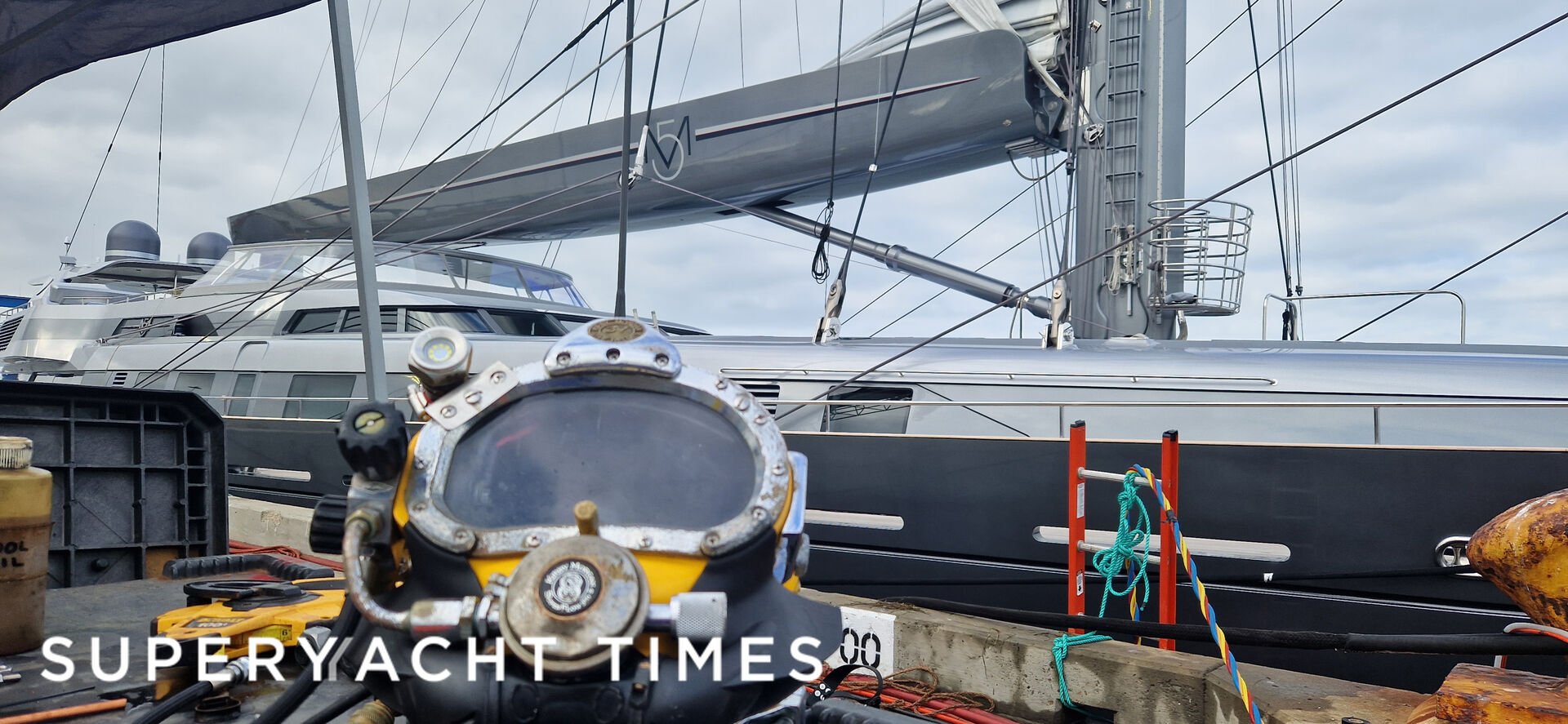When Rob Doyle Design in Kinsale, Ireland, received a call from the largest sloop in the world saying the yacht had lost the tip of its keel off the coast of Peru, the team had to set in motion a repair job from the other side of the world. Mark Small, Technical Director at Rob Doyle Design, recounts how it was done.
They undertook a full internal inspection around the keel box, hydraulic locking rams and locking shims. There was no apparent damage to any part of the structure or fittings, so M5 continued sailing into Lima and arrived the following day. On arrival the captain decided to inspect the outside of the hull with a diver to make sure they hadn’t lost any anodes in the collision. It was only at this stage that it became apparent that the lower third of the keel was missing. No other damage was visible.

When the full extent of the damage became clear the first priority was to move the vessel to a place where the repairs could be carried out. At Rob Doyle Design we undertook an extensive review of the damage and produced a stability assessment with the keel tip missing. The vessel is DNV/Red Ensign classed and following the assessment we found that she still fully complied with the Motor Yacht Stability requirements. Unsurprisingly, however, the yacht failed the Sailing Yacht requirements. Specifically, the Range of Positive Stability was now 73 degrees (90 degrees required) and the Angle of Equilibrium was 8 degrees (15 degrees required). On submission of our stability assessment, it was agreed with Class that the vessel could be moved, but could not set sail.
We scoured the entire USA and Canada and contacted multiple manufactures but failed to find a single company that could supply a new keel tip to the specifications required. In the end, we had to return to Irons Brothers, the original manufacturers in the UK. Now all we had to do was transport 35 tonnes of keel and cradle across the Atlantic and the USA – in itself not a straightforward task as it was an off-gauge load.
Saving the season
It quickly transpired that replacing the keel was going to take a long time. The keel tip would not be ready until September or October, we were struggling to find a shipyard, and now the owner’s summer cruising season was in jeopardy. The owner rightly pointed out that when they lost the keel nobody really noticed any difference in the sailing characteristics, so could we not ask Class to allow the yacht to sail for the summer with some restrictions? As Technical Director for Rob Doyle Design and knowing we were dealing with the biggest sloop in the world that had lost a portion of its keel and ballast, I was very sceptical that this would be allowed. However, the owner requested that we explore all options with Class so he could rescue the cruising season.
Following a detailed conversation with Class and the captain of M5, we agreed that we would undertake a VPP analysis of the yacht both with and without the keel. Comparing this to the known data already on file, we were able to establish the real-world effect of different sailing scenarios and how the missing keel tip affected the stability of the vessel. We decided to limit the assessment to sailing with a maximum sail area of one reef in the mainsail and the J2 set with maximum heel angle of 15 degrees.
Do it with divers
Fast forward to March 2023. Still unable to find a suitable yard to undertake the repair work in the USA, by now we were looking to return to Europe as the only option. Then we got a call from co-captain Ryan Bergman: “How about putting the keel tip back on using divers?”, he asked.
The idea had come from Roger Woolsley, a good friend of the owner’s who works in the aviation business. They were on M5 together but couldn’t sail without the keel tip, so Roger discussed the problem with his military contacts and other knowledgeable friends. They suggested using divers to replace the keel tip. 
The plan of action was as follows. The keel tip and cradle, now fitted with a base plate to stop it sinking into the mud, would be craned onto the sea bed; M5 would be positioned immediately above and the keel and cradle lifted into position using air hoists; the slots and bolt galleries would then be aligned, the plates adjusted where needed, and the bolts fitted at the correct torque; finally, the cradle would be dropped back onto the seabed and M5 could sail away. Every stage of the process would be carried out underwater with a Class surveyor on board the yacht to oversee the operation from start to finish. What could possibly go wrong?

This article is featured in Issue 4 of the new SuperYacht Times technical magazine How to Build It. Subscribe now to receive your copy straight to your door and never miss another issue.
